Epoxy Paint
Epoxy paints are thermoset paints that are obtained from the chemical reaction of epoxy resin with polyamide or polyamine hardeners. Due to their various and desirable properties, they encompass a wide range of industrial paint products. Arya Sath Tehran Company has fully considered the versatility of epoxy paints in its portfolio of industrial products.
The types of primers and epoxy paints offered by Arya Surface Tehran Company:
What is Epoxy Paint?
What is Epoxy Paint?
Epoxy paint and epoxy floor coating are terms that are often used interchangeably. If you intend to buy epoxy paint and use it as a floor covering at home, you might see these two terms being used separately in stores.
Moreover, paint manufacturing companies produce proprietary paints with their own brand names. Epoxy coating, in technical terms, is not paint even if it is referred to as such. In epoxy paint, acrylic and epoxy are directly combined, sometimes referred to as epoxy type one. The acrylic formula allows for customization in painting, and this type of epoxy paint dries like regular paint. The epoxy component provides paint resistance against chemical stains on the floor, such as gasoline or oil, making it commonly used in garages and workspaces.
For further information, read the article ‘What is Epoxy Paint?’
What is the Use of This Paint?
Epoxy paints can be used to cover garage floors, basements, and secluded courtyard pavilions. Epoxy paint is a combination of two liquid substances, epoxy resin, and hardener, to create a strong, solvent-resistant, and durable coating that can be used for painting floors, kitchen floors, and different floor surfaces. The diverse types of epoxies are of interest due to their high durability and their applicability on concrete grounds, steel painting, and industrial uses.
Applications of Epoxy Paint
Are you ready to freshen up your floor? Epoxy paint is formulated for garage floors in various colors, aiming to add a certain character to your garage. Metallic blue is used for a clean appearance, while light creamy color is employed to create different shades of gray. Using epoxy paint not only brightens your garage floor but also protects it against tire marks, oil stains, leaks, peeling, and cracks.
An epoxy concrete floor consists of a combined mixture that results in an extra shine. This feature helps prevent scratches and withstand the moisture present in the air since epoxy paint is resistant to moisture. Using epoxy paint for the kitchen floor protects it against stains from tomato sauce, coffee, and surface peeling.
Why is Epoxy Paint Coating Used?
Epoxy coating is a combination of two separate components to cover the floor. In purchased kits from hardware stores or home improvement shops, you must mix the epoxy resin component with the polyamine hardener. Unlike epoxy paint, this combination not only dries but also enhances the state of the part. Cement floors benefit greatly from this treatment as this process seals the porous concrete. The presence of resin makes the floor glossy, and an epoxy floor coating protects the floor against stains and scratches (concrete chipping).
How to Use Epoxy Paint
Epoxy paint is a resistant and durable water-based paint that can be used on various surfaces like walls, building floors’ ceilings, and stairs. Epoxy paint is highly resistant to scratches and abrasions, meaning it generally will not get damaged from daily use. The application of such paint on surfaces is usually performed by an expert as it can sometimes flow or become bubbly, but it is cost-effective, it usually gets less smoke and is unlikely to peel off.
So, if you feel confident to take on this task, it’s worth experiencing it yourself. If you have basic DIY skills, you will not need a specialist to handle it. All you have to do is follow a few simple instructions to quickly and easily get the job done.
Step One: Ensure Surface Cleanliness
Firstly, make sure the area you want to apply the epoxy on is clean. You can do this by wiping it with a cloth soaked in soapy water. Once you are certain the intended surface is clean, use a paper towel or kitchen towel to dry it thoroughly. Ensure that the wall is completely dry as any moisture can affect the performance of epoxy paint.
Step Two: Apply Epoxy Paint
After the first step, you can apply the epoxy paint onto the surface. For the best paint result, thoroughly mix the contents of the can before use. This will ensure better mixing of the raw materials and prevent bubble formation. When applying the paint, even with strokes or touches, be careful not to create bubbles. Keep stirring the remaining paint in the can continuously to ensure the constituents of the paint don’t separate during use.
Step Three: Let it Dry
Once the work is completed, before deciding whether to paint another layer, you need to allow the paint to dry. Ensure that while the paint is drying, no one touches it. If you want to repaint for complete coverage, ensure the paint has completely dried in all areas. Wait for about 24 hours to be completely sure the paint has dried.
Step Four: Finishing the Work
Before finishing the job, applying a layer of gloss oil is required. This process adds shine to the epoxy paint and also helps better seal the wall. Again, you will need to wait for the surface to be completely dry before using gloss oil. Use spray gloss oil to ensure the walls are evenly coated.
Safety Tips When Using Epoxy Paint
Safety and Hygiene:
Ensure eye protection when using epoxy paint.
If the product accidentally comes into contact with the eyes, rinse immediately with water for at least 10 minutes.
Ensure respiratory safety by wearing a mask. Avoid breathing dust or dirt.
Apply the paint in a well-ventilated area.
Epoxy paint can cause severe damage if swallowed.
Do not use an empty epoxy paint container to store food.
Keep epoxy paint out of children’s reach.
Spraying epoxy paint for pregnant women is risky, so avoid breathing dust or spray paint.
In case of an emergency, contact the medical supervisor.
Advantages of Using Epoxy Paint
Epoxy paint is one of several types of paint. Epoxy can be used for both interior and exterior surfaces, but it is generally used as a coating for interior floors. When dried, epoxy paint becomes a hard and durable surface, making it the best choice for floor covering. The biggest drawback of epoxy paint is that it contains toxic substances. Also, if a mistake occurs or the painted surface does not dry smoothly and uniformly, it can cause further problems and its repair can be costly.
Impact Resistance
Epoxy paint is very strong and resistant to pressure. This means that if the objects that fall or are dragged on the surface do not break, crack or damage it, there will be no problem. Because of this feature, epoxy paint is commonly used in warehouses, garages, and auto repair shops.
Slip Resistance
Most epoxy paints are resistant to slippage even when wet or greasy. Water-based or two-component acrylic epoxy paints are used. Epoxy paint can provide a smooth and slip resistant surface. If the area you choose to paint is one of the busiest areas, you may want to use non-slip epoxy coating, which provides a surface with raised texture for further protection. The extra surface with raised texture is usually used for platforms, ramps, car stores and recreational anchorages.
Fire Resistance
Most epoxy paints are slow to ignite or fire resistant. They can withstand heat of more than 200 degrees Celsius or about 390 degrees Fahrenheit. To ensure fire resistance in the epoxy paint you are using, check the product label. Due to the fire resistance of epoxy paint, it is commonly used to repel flames in commercial airline products, warehouse areas, and to preserve explosives.
Water Resistance
When epoxy paint dries, it protects the concrete from the moisture of underground water and from water or any liquid that flows on the ground. Epoxy paint is also resistant to chemical leakage. Chemicals are not absorbed into the paint and are easy to clean.
How to Paint on Epoxy Paint
Epoxy paints are very popular for floors because they look sharp and are incredibly durable. Unfortunately, this significant resistance makes it difficult to repaint the same surface for changing projects. If you want to paint on epoxy paint, here are some tips you should know before starting work. The following steps will help guide you.
Step 1
Remove any dirt or sticky materials from the painted surface using a metal knife. Use a chemical degreasing agent and a broom or coarse brush to clean the greasy areas. Wash the entire cement floor thoroughly with soapy water. Use fans and towels to completely dry the floor.
Stage 2
Mix the epoxy resin with the catalyst in a bucket with a moving stick. Add any color that may be in your box. Dip the roller into the mixture. Shape this mixture on the surface of the epoxy painting starting from one corner and moving from left to right.
Stage 3
Proceed from left to right. Cover the epoxy paint completely with the epoxy mixture. Allow the surface to dry completely for 24 hours and then apply a second coating. Before the second layer dries, pour the epoxy texture on the surface.
Further study : How to Paint with Epoxy Paint
Can Epoxy Paint Be Used for Wooden Floors?
Epoxy paint is a coated layer that contains a catalyst and a resin. When combined, these two components harden into a stable coating and are able to withstand high levels of pressure. Epoxy paint is ideal for concrete surfaces, such as basements and garages, and can also be used to cover wooden floors. However, important preparatory steps are necessary before applying it to wood.
Sandpapering
Wooden floor covered with polishing grease does not cause adhesion of epoxy paint. These coatings should be removed before starting work, using a manual or electric sander.
Add Primer
Bare wood surfaces are not suitable for paint adhesion. Before the epoxy paint is attached to the wooden floor, it must be covered with an acrylic plastic primer. The primer should be applied using a roller attached to a rolling pole. The prepared wooden floor should be allowed to dry for at least three hours before it is ready for epoxy paint.
Mixing
The color will remain moist until its two components are joined. The resin and the catalyst should be stirred in a bucket for at least five minutes using a stirring stick. Also, insufficient stirring can cause the epoxy to move irregularly and streaky.
Installation
Epoxy paint should be applied using a roller attached to a rolling pole. However, the roller must be equipped with a paint splash resistant tufted coating. The paint starts to harden very soon, so the entire floor should be covered in one session, as it does not stay moist for more than an hour or two.
Considerations
When applying epoxy on a wooden floor, always start from a very far corner and move towards the exit point of the room. Otherwise, you may get stuck inside the wet paint.
Further study: How to Paint with Epoxy Paint
How to Paint Walls with Epoxy Paint?
Epoxy paint is a two-component coating consisting of a catalyst and a resin. The two components combine to form a durable coating capable of withstanding high amounts of pressure. If you paint a wall with epoxy coating, use a special preparation strategy based on the type of wall you are working on. Once you have the surface ready, the painting process is relatively simple.
Wash the brick or cement wall using a high-pressure sprinkler. If you work indoors, use a broom and bucket. Let the walls dry. Apply an acrylic primer layer. Let the primer dry for two hours. Wash all painting tools with water. Mix the resin with the catalyst in a bucket and stir it for 5 minutes using a wooden stirring rod. Apply a layer of epoxy paint; you can use a roller covered with a 3000 cover and attached to a rolling pole. Allow the epoxy to dry and cure for four hours.
5 Uses of Epoxy Paint
Epoxy is a special type of paint that has several potential applications. Epoxy paint is one of the hardest and most durable paint materials available in the market today. Here, we will review some of the potential capabilities of this paint:
Sanitary Ware and Bathroom
One of the most common uses for epoxy paint is in bathrooms and sanitary ware. This paint is highly durable and resistant to moisture, making it a suitable choice for a bathroom. Sanitary ware usually contains a significant amount of water and steam. During a hot shower, there’s a high chance of moisture affecting the walls. If you are using a paint that does not cope well with this level of moisture, you may encounter problems. Hence, using epoxy paint in the bathroom prevents any damage caused by water or humidity.
Saunas
Another potential use of epoxy paint is in sauna rooms. A sauna room is not like an ordinary room. Any paint on the walls must be able to withstand very high temperatures and high humidity levels. This makes epoxy one of the best available choices for this scenario. Over the years, it has been proven that epoxy paint is a good option for this type of usage and holds up well against moisture. Using any other type results in cracking and peeling of walls, requiring constant cleaning.
Pool Room
A pool room is another potentially great place to use epoxy paint. Indoor pools create a lot of humidity in the air. Therefore, you need something on the walls that can resist the high humidity and will not be negatively affected. In this application, epoxy paint is literally functional.
Garage
The garage is a place where people spend a lot of time. People constantly walk on the floor, and vehicles are driven in and out. So, if you want to paint the garage floor, you need something that can withstand heavy traffic. Epoxy is a suitable solution for this scenario. If a heavy tool or device falls on the floor, it is less likely to cause damage and there will not be a need for repairs. Epoxy has a high resistance to scratches and heavy vehicles moving on it.
Commercial Applications
In addition to many residential applications, epoxy paint is also commonly used in commercial settings. Installing it on walls in a commercial building gives you a painted surface that can withstand abrasion and cracking. In a commercial building, you will have people constantly moving in and out, and there is a significant volume of traffic to deal with. Epoxy paint can be a good solution in this case.
Explanation of 3 Types of Epoxy Paint
Epoxy is often used as a floor coating and is produced by combining resin with a hardener. It is durable and becomes hard and glossy after application. To achieve a desirable final product, paint is added to this type of coating, and all three types are available in various color options. The types of epoxy paint are categorized based on their solid content, which has three types:
100% solid: This is the purest form of epoxy paint. While it is durable, it quickly dries and hardens and is generally recommended for professionals due to its higher cost.
Solvent-based Epoxy Paint: This type consists of 40 to 60 percent solid epoxy combined with chemical solvents. It is highly popular due to its wide range of colors but the fumes emitted from it can be dangerous. While these vapors are well absorbed into the ground, it is recommended to use suitable equipment to prevent them from entering the lungs during painting. The price of this type of paint is moderate and balanced.
Water-based Epoxy Paint: This type contains 40 to 60 percent solid epoxy dissolved in water. Its vapors are non-toxic, making it the best choice for household use.
Is epoxy floor coating resistant to scratches?
Epoxy does offer a degree of scratch resistance on floor coatings. A thicker coating, formed from a mixture of resin and hardener, prevents scratches caused by the impact of heavy objects. Paint with less epoxy may show marks that indicate the amount of force applied to the floor or the direction of the fallen object.
Compared to tiles, wood, or other floor coverings, epoxy floor coating is considered the most scratch-resistant. High-traffic areas, open spaces, decks, work spaces, and high moisture areas like pool or sauna floors are excellent candidates for epoxy floor coatings due to their scratch resistance, high moisture resistance, and abrasion resilience.
Is epoxy floor coating cheaper than tiling?
It depends on the size of the space. An epoxy floor coating kit is the cheapest flooring option considering its durability. Epoxy paint may cost around $30 for a gallon, sufficient to cover several hundred square meters. In comparison, floor tiles can cost from a few cents to tens of dollars per square meter, making epoxy paint significantly cheaper.
The advantages of an epoxy floor coating over tiling are greater. Epoxy paint is harder, more durable, and more stable than standard tiles. While an epoxy floor coating is the hardest to damage, tiles can become the most damaged or broken. The only downside to epoxy coating is that it may turn yellow over time, depending on how clean the resin is and how much it is exposed to sunlight. This has a major effect on the clarity and clouding of the epoxy coating color and is not due to the paint itself.
Arya Sath Tehran; Provider for Various Epoxy Paints
Arya Sath Tehran; Provider for Various Epoxy Paints
Epoxy paints are predominantly used in industries to enhance surface resistance against corrosion, chemicals, physical agents, and heat. Epoxy paint comprises two main components: hardener and epoxy resin. In different types of paint, the mixing ratio of hardener and epoxy resin varies depending on the type of epoxy paint, and it’s advisable to refer to the application instructions and technical specifications. Another critical aspect is attention to the gelation time and the time constraints during paint application. To achieve the best result, the proper preparation of the working surface for applying epoxy paint is crucial. Indeed, surface preparation is considered a pivotal part of the painting process. It should be noted that several factors contribute to determining the price of epoxy paint.
For advice on buying epoxy paint and to get technical information about this product, please contact the sales experts of Aria sath Tehran now. Also, follow us on Instagram.

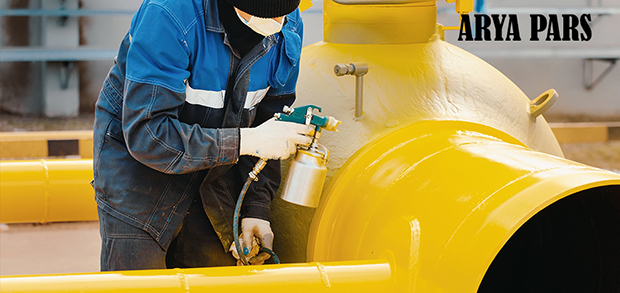

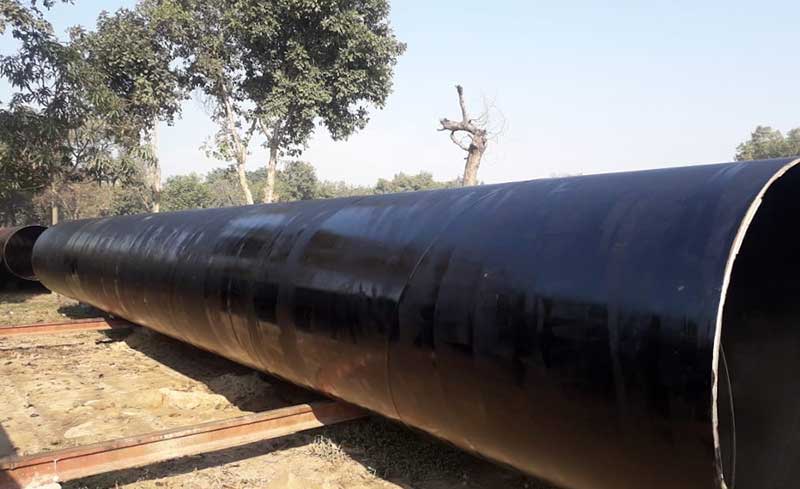
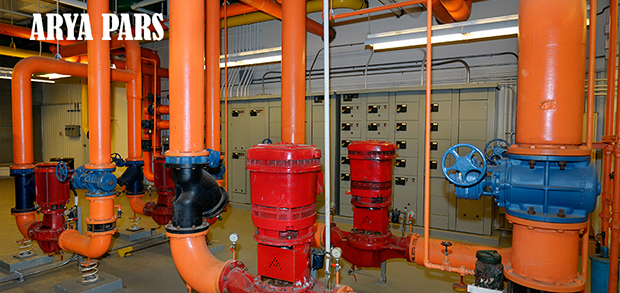
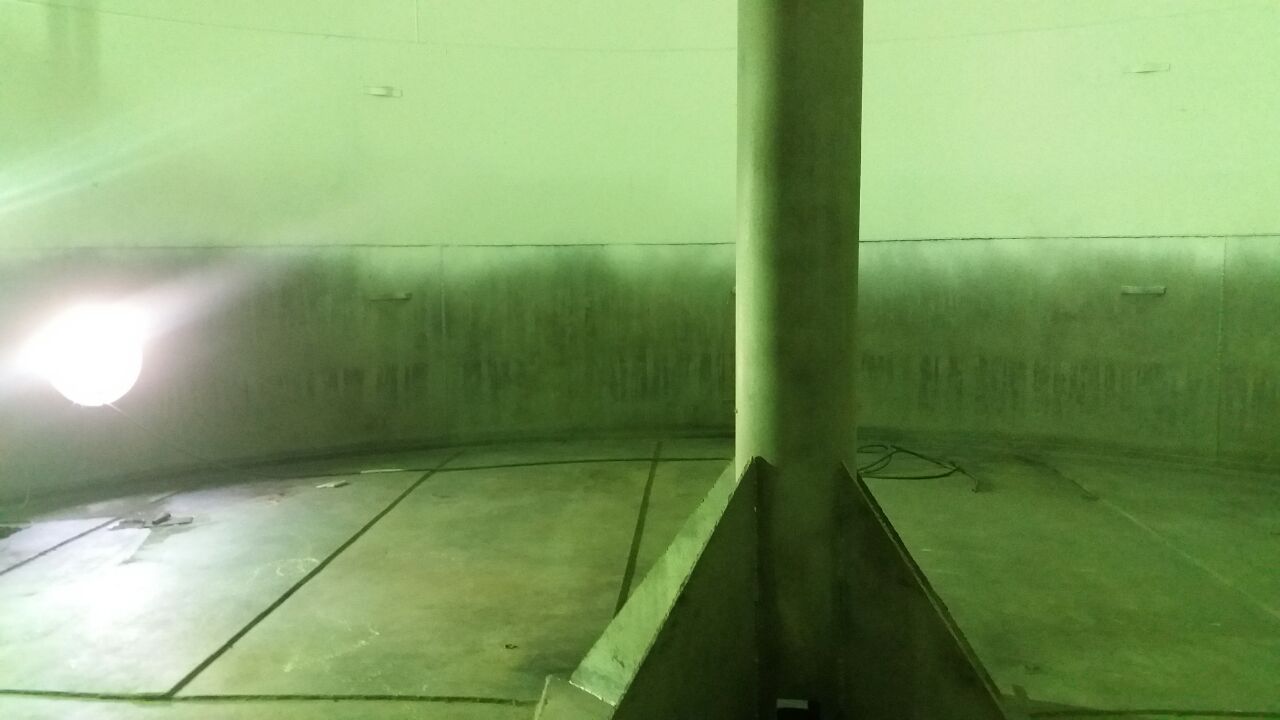
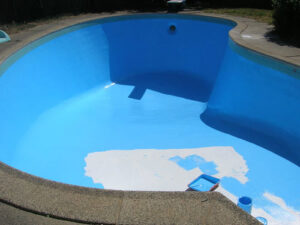

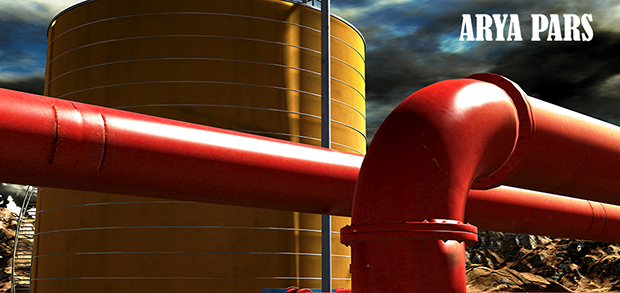


Leave a Reply